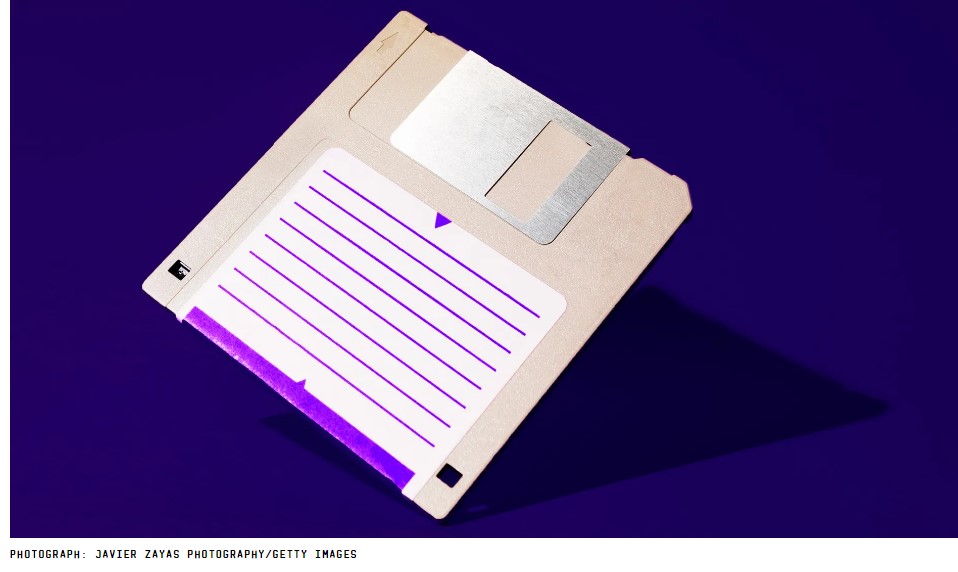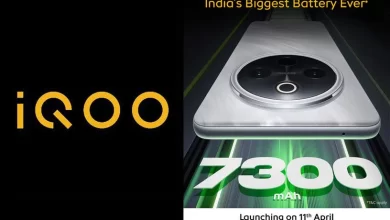Why the Floppy Disk Just Won’t Die

A surprising number of industries, from embroidery to aviation, still use floppy disks. But the supply is finally running out.
When Mark Necaise got down to his last four floppy disks at a rodeo in Mississippi in February, he started to worry.
Necaise travels to horse shows around the state, offering custom embroidery on jackets and vests: “All of the winners would get a jacket and we’d put the name of the farm or the name of the horse or whatever on it,” he says.
Five years ago, he paid $18,000 for a second-hand machine, manufactured in 2004 by the Japanese embroidery equipment specialist Tajima. The only way to transfer the designs from his computer to the machine was via floppy disk.
“We started with eight disks, but four of them stopped working, which made me very uneasy,” he says. “I tried reformatting them in order to get them to work properly, but it didn’t work. I was concerned I wouldn’t be able to continue with the embroidery.”
Back when Necaise’s Tajima machine was made, floppy disks were still in mass production—and were particularly popular in Japan, where they were used for official government procedures until last year. Even though the last major manufacturer of floppy disks stopped making them in 2010, the machines that rely on them—from embroidery machines to plastic molding, medical equipment to aircraft—live on, relying on a dwindling supply of disks that will one day run out.
“I personally think that the floppy disk should die,” says Florian Cramer, a writer and filmmaker who, in 2009, shrunk every Oscar-nominated film from that year into animated GIFs on two floppy disks, as a commentary on Hollywood’s digital piracy crackdown. “Objectively it’s a toxic medium. It’s basically plastic waste … It’s really something that should no longer exist.”
Most of the companies still using floppy disks are small businesses or companies running tight margins who either simply never got around to upgrading their equipment, or found it too expensive to do so.
Davit Niazashvili, a maintenance manager at Geosky, a cargo airline based in Tbilisi, Georgia, still uses floppy disks to apply critical updates to two 36-year-old 747-200s, which were originally delivered to British Airways in 1987: “When an update is released, we need to download it to two 3.5-inch floppy disks. There are no computers with built-in floppy drives left, so we had to source an external one,” Niazashvili says. “Then we take the disks to the aircraft to update the flight management system. The operation takes about an hour.”
The updates contain essential data such as changes to runways and navigational aids, and are released every 28 days according to a fixed global schedule, which is already set through 2029.
“Nowadays it’s very hard to obtain floppy disks. We actually get them from Amazon,” Niazashvili says. “They are very sensitive and prone to failing, so at best we can use each one around three times, then we have to throw it away. But we have to do it. It’s not a problem. As long as floppy disks are still available, we’re happy with it.”.

Fewer than 20 Boeing 747-200s remain in service worldwide, and only in cargo or military configurations. The US Air Force operates six, two of them as Air Force One. It’s unclear whether they still use floppy disks, too, but the US military employed the even-older 8-inch floppy disks in its nuclear arsenal until 2019.
Several other types of commercial aircraft also use floppy disks, including newer variants of the 747 and the 767, older Airbus A320s, and some business jets such as Gulfstreams built until the 1990s. It is possible to upgrade from floppy disks to USB sticks, SD cards, or even wireless transfer, but doing so could cost thousands of dollars—and mean making a change to something that, while archaic, is known to work.
“There are some other strange evolutionary dead ends we find ourselves tied to because everything has to bow to the gods of reliability in aviation,” says Brian Ford of ACI Jet, an aircraft maintenance company based in California. “We still use PCMCIA cards and Zip disks, which are harder and harder to find as well. We have much longer design cycles that always feel like [they’re] getting further behind consumer devices, but we are catching up.”
Following the rodeo incident, Necaise decided to finally upgrade, but not to an entirely new machine—just to a floppy-to-USB emulator. These devices cost around $275 each, replace the floppy drive with a simple USB port, and are custom-made by a handful of companies.
“Embroidery and CNC [computer-operated industrial tools for cutting materials such as metal or wood] are usually our biggest buyers,” says Joshua Paschal of PLR Electronics, a Texas-based company that sells emulators.







